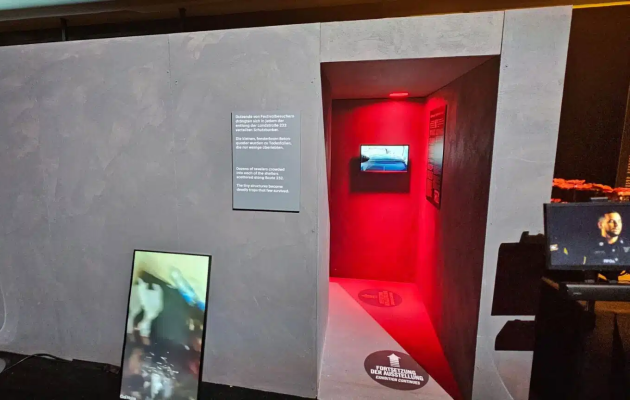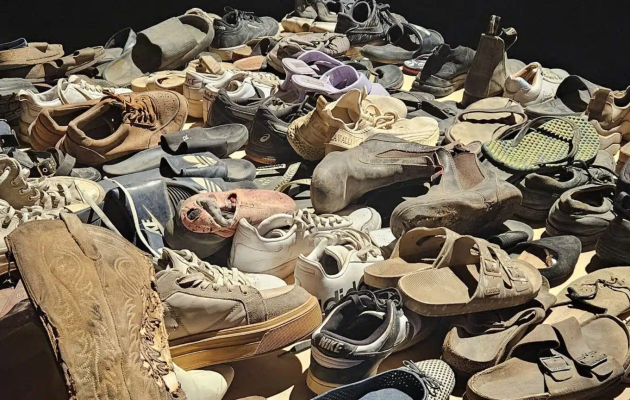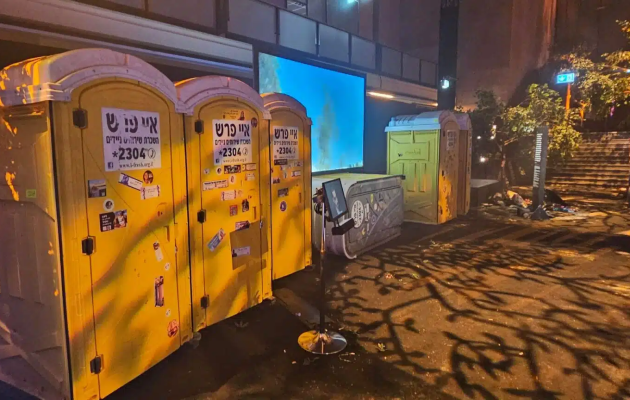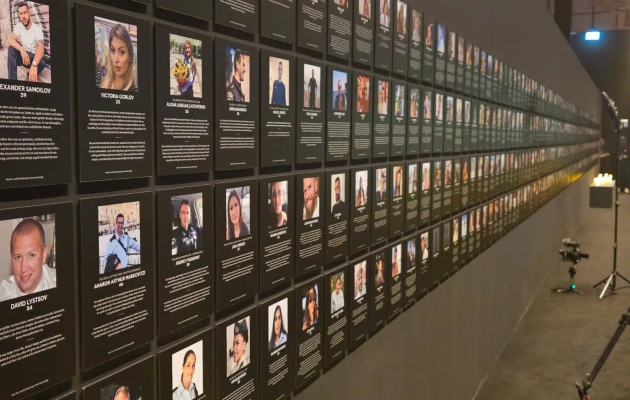On 7 October 2023, Hamas attacked Israel and spent hours murdering people in the south of the country, where the Nova Music Festival was taking place. An exhibition in Berlin recalls the assault on the festival.
![The exhibition will be on display in Germany until 16 November. / Photo: Martin Schlorke, [link]PRO[/link].](https://cms.evangelicalfocus.com/upload/imagenes/68ecbeaf6fe3a_novafestival940ProMedienPNGCropped.png) The exhibition will be on display in Germany until 16 November. / Photo: Martin Schlorke, [link]PRO[/link].
The exhibition will be on display in Germany until 16 November. / Photo: Martin Schlorke, [link]PRO[/link].
6:29 a.m. This time is burned into Israel's collective memory. After massive rocket fire from the Gaza Strip, thousands of Hamas terrorists finally crossed the border and began their murderous expedition into Israel. A few minutes earlier, there was no hint of this at the Nova Festival site.
Young people danced and celebrated exuberantly into the sunrise. This is the scene that opens the ‘Nova Music Festival Exhibition,’ which opened in Berlin.
At the beginning, there is no sign of the horror of 7 October. In the first exhibition room, a seven-minute video about the Nova Festival is shown. Participants have their say and describe the joie de vivre and light-heartedness that the festival stood for until 7 October 2023, shortly before half past six in the morning. But then everything changes.

[photo_footer] Visitors can enter the replica bunker. / Photo: M. Schlorke, PRO. [/photo_footer] The exhibition now leads through a black curtain and the large departure hall of the former Tempelhof Airport opens up. And there it is, the horror. Visitors are now immersed in the semi-dark festival grounds and have to find their way around. First, there are several screens showing Hamas videos on a continuous loop. Next to them is another screen showing witnesses recounting that morning. In between is a tent that appears to have been hastily abandoned, where festival participants had probably been sleeping.
And then there is the almost unbearable background noise. A wide variety of sounds emanate from the countless screens scattered around the departure hall, some standing upright, others lying on the floor. Gunfire. Screams. Eyewitness accounts. Festival participants' last phone calls to their parents. ‘I'm with you, sweetheart. Everything will be fine.’ And at the same time, everything seems empty. No people. No joy. No life.

[photo_footer] Shoes left behind by festival-goers. / Photo: M. Schlorke, PRO[/photo_footer] On the slightly sandy ground, a staircase leads down into the large hall. Burnt-out car wrecks lie between trees and tents. After the first rockets flew on 7 October, numerous festival participants ran to their cars to seek safety. But terrorists were lurking on the streets.
At the edge stand two replica bunkers bathed in red light. These were located on Highway 23, near the festival grounds. Many festival-goers sought shelter from the rockets inside them. But when the terrorists came, these windowless concrete cubes became deadly traps.
Panels and videos inside the bunkers tell the story. One of them tells of sergeant Aner Eljakim Schapira, who tried to defend the bunker unarmed. He managed to throw back the hand grenades that the terrorists threw into the bunker again and again. But eventually, the terrorists managed to kill Schapira. A total of 16 people were killed in this one bunker alone.

[photo_footer] The festival toilets offered no protection from the terrorists. / Photo: M. Schlorke, PRO[/photo_footer] On the other side of the hall are riddled yellow Dixi toilets where festival-goers tried to hide from the terrorists – without success. A video shows a man shooting at the toilets with his rifle.
Right next to it is an abandoned bar. A plaque tells the story of Liron Barda, who worked as a bartender at the festival and did not flee during the attack, but instead provided first aid.
It is stories like these, among all the exhibits, the background noise, the videos and the almost unbearable reports of rape and mutilated genitals, that shine like a spark of humanity amid the barbarism. It is one of the strengths of the exhibition that they are told. Likewise, that the videos are either censored or edited in such a way that the unacceptable atrocities are not shown. Even without these explicit images, the display is shocking and makes the extent of the crimes comprehensible.

[photo_footer] Pictures commemorate the 411 victims at the Nova Festival. / Photo: M. Schlorke, PRO[/photo_footer] And the exhibition shows the victims. At the back of the departure hall, pictures of all the murdered festival participants are hanging on a wall. On the opposite side are pictures of the participants who were abducted by Hamas to the Gaza Strip. In between is a sea of lights and tables piled high with clothing and shoes left behind. Memories of piles of shoes from the Nazi concentration camps are evoked.
The exhibition is shocking. It is depressing. It provides an insight into the incomprehensible suffering that befell Israel on 7 October 2023. It shows what humans are capable of. Can such an exhibition be recommended? Yes, because it is both a reminder and a warning. Because what happened can happen again.
The attack on the Nova Festival is considered the deadliest attack on a music event worldwide. The terrorists murdered 411 of the approximately 3,000 visitors, and hundreds were injured. 44 festival participants were abducted to the Gaza Strip.
The Nova Music Festival Exhibition can be seen until 16 November on the grounds of the former Tempelhof Airport, in Berlin, Germany. It has previously been shown in Jerusalem, the USA, Canada and Argentina. Admission costs €20.60. Further information can be found here.
Martin Schlorke, Berlin correspondent at PRO Medienmagazin in Germany. This article was first published by PRO, translated into English and re-published with permission.

Las opiniones vertidas por nuestros colaboradores se realizan a nivel personal, pudiendo coincidir o no con la postura de la dirección de Protestante Digital.
Si quieres comentar o